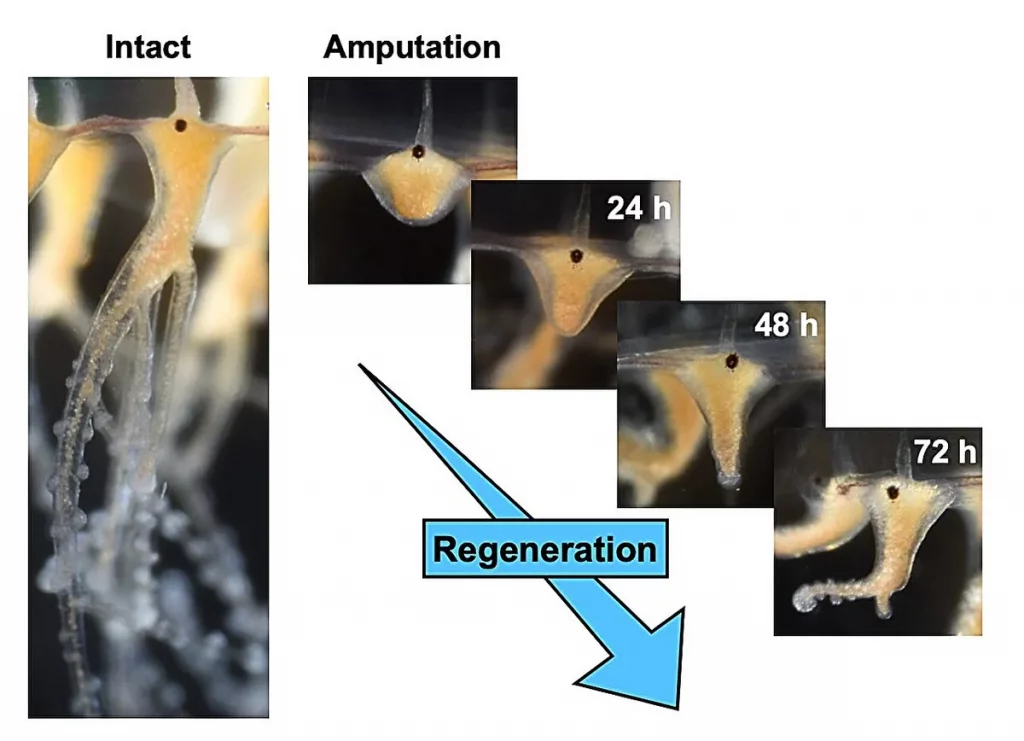Jellyfish are amazing animals, but there is a specific subphylum that is fascinating. Not only is it responsible for producing the only known case of natural immortality, but it also houses a species that can regenerate amputated tentacles within a few days. For a long time it was not known how they could do this, but now a group of researchers has discovered why.
The research was recently published in the journal PLoS Biology It is led by scientists at the University of Tokyo who investigated how these animals reconstitute themselves so that these discoveries can be applied to ourselves.
{{#values}} {{#ap}}
{{/ap}} {{^ap}}
{{/ap}} {{/values}}
- It is known that the species of jellyfish Cladonema pacificum It belongs to the same subclass as Immortals Torretops dohrne;
- They are small in size, no larger than a small fingernail.
- Its regenerative ability is impressive, as it is able to regrow amputated limbs within 2 to 3 days.
Regeneration is not limited to these animals. Starfish, salamanders and chameleons can also regenerate limbs, but the speed with which jellyfish do this draws attention.
For a long time, researchers have known what happens in these animals that allows them to regenerate, but they didn't know exactly how they did it. It is known that when injury occurs, a group of undifferentiated cells known as blastomas surround the site, repairing the damage and turning it into a replacement.
Through new research, Japanese scientists were able to identify the cells behind the reconstruction of these amputated limbs, clarifying the understanding of these processes.
Read more:
Jellyfish limb regeneration

The cells responsible for rebuilding limbs in jellyfish are proliferating cells, very similar to stem cells that grow and divide, but have not yet differentiated. In addition, they work with stem cells residing in the tentacles in order to regenerate the lost limb.
Importantly, these proliferating stem cells found in the blastema differ from the resident stem cells found in the tentacles. Repair-specific proliferative cells contribute mainly to the epithelium—the thin outer layer—of the newly formed tentacles. Together, resident stem cells and repair-specific proliferative cells enable rapid regeneration of a functional probe within days.
Yuichiro Nakajima, author of the study, said in a statement
Researchers still don't know the origin of these regenerating cells, but they still consider the discoveries an important advance, because they contain clues about how tentacle regeneration in jellyfish might apply to more complex organisms. So, who knows, maybe in the future, with the right tools, we will be able to regenerate our limbs.

